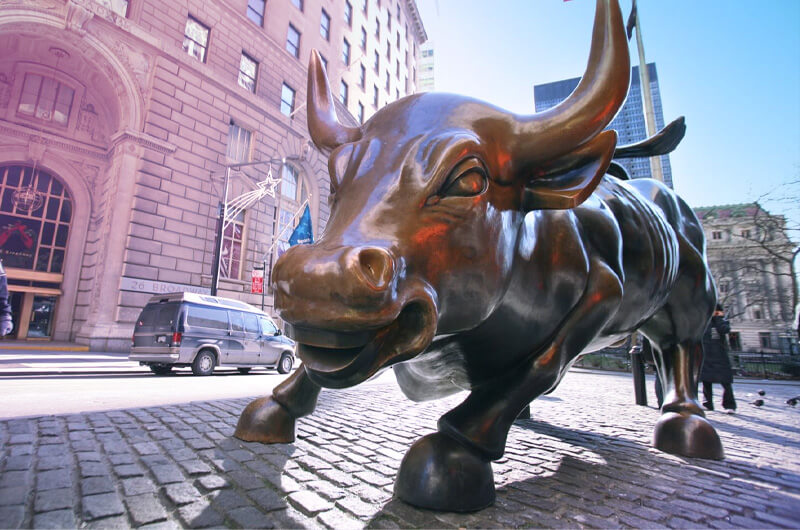
Last year, we looked at the market rotation towards mature companies with high cash flows, and its implications for messaging. Since then, growth company valuations have been decimated, with some pundits drawing parallels with the dotcom bubble. At the turn of the century, and then again after the Global Financial Crisis, bear markets created incredible opportunities for investors that were able to identify future world class companies. The most notable of these should offer inspiration to the many growth companies and investors facing today’s sceptical environment.
Amazon listed in 1997. Within three years, its share price had risen more than 500%, and the company was well advanced on its journey from online physical bookseller to “the everything store”. But in the race for growth, it acquired several businesses at inflated prices which turned out to be destructive to shareholder value. In early 2000, just one month before the market crashed, it sold $672 million in convertible bonds to create a cash cushion. Without that cushion, according to author Brad Stone, the company would have gone into insolvency.
The convertible bond may have secured Amazon’s short-term survival, but in the ensuing crash, its share price plummeted over 80%, heaping pressure on CEO Jeff Bezos. His answer, as revealed in his 2001 letter to shareholders, was to stick to his long-term vision for the company married with a relentless short-term dash towards profitability. This dual narrative set out specific rationale and targets to provide credibility. Bezos also fronted up to failed investments, showing that the company had learned from its past mistakes.
Most powerfully, Bezos invoked the father of value investing.
“As the famed investor Benjamin Graham said, ‘‘In the short term, the stock market is a voting machine; in the long term, it’s a weighing machine.’’ Clearly there was a lot of voting going on in the boom year of ’99—and much less weighing. We’re a company that wants to be weighed, and over time, we will be—over the long term, all companies are. In the meantime, we have our heads down working to build a heavier and heavier company.”
On one level, the message from Bezos could not have been clearer: Amazon is a company that will deliver a strong underlying performance, notwithstanding the gyrations of Mr Market. On another it was more implicit: I think like an investor as well as a manager; I know how to get returns on capital reinvested in the business. He reattached his original 1997 letter to shareholders, which set out his strategy to achieve market leadership by focusing on customers and making long-term investment decisions which enable the business to reach that destination.
In the same year, nearly 5,000 miles away from Seattle in a small office over London’s Kings Road, Nick Sleep and Zak Zakaria founded a business called Nomad Investment Partnership. Their intention was to eschew day-to-day market movements in favour of fundamental analysis and original thinking. Sleep was a fan of Amazon, having been inspired by Bezos’ London IPO presentation in 1997, but at the start they focused on value stocks.
Whilst Sleep and Zakaria did not immediately invest in Amazon, they watched Bezos closely. Over time, they came to understand the power of his strategy, and the progress the company was making against it. They saw parallels between Amazon and a handful of older companies like Walmart and Costco, which had delivered incredible long-term returns by blending cost efficiency with reinvesting in customers and new business lines. Bezos called his model the flywheel; they called it economies of scale shared.
Sleep’s 2006 letter to investors – published a year after they started buying up shares in Amazon – reveals their thinking:
“I think Bezos would run a good investment fund: but that is the point, good investing and good business decisions are synonymous. Mr. Bezos does not control the timing of the payback, just as we do not control the timing of Nomad’s performance but, in our judgment, the ever widening of the moat surrounding Amazon largely determines whether our investment will be a success. We must now have the patience to wait.”
Years after Bezos had planted his messages, they were bearing fruit, at least with these investors. But the ride wasn’t a smooth one for Sleep and Zakaria, particularly during the 2008 crash. That year, their fund was down 45%, mirroring Amazon’s share price. They stuck to their guns, as Sleep’s 2008 letter shows:
“Our businesses are surging ahead, even if, in some cases, their share prices are half what they were twelve months ago. In the last few months Amazon has been priced in the market as if it would not grow in the future, despite some of the best growth prospects we can imagine. That is a very rare combination and, combined with other similarly cheap stocks in the partnership, was the basis for Nomad’s reopening at the end of last year.”
They raised more money, doubled down on their investments, and were richly rewarded. By the time Sleep and Zakaria took early retirement in 2014, Nomad had returned 921.1% against 116.9% for the MSCI World Index. Amazon was a key driver, though other companies using the economies of scale shared model contributed to their success. And the compounding continued long after. If you had bought into Amazon at the same as Sleep and Zakaria, you would be sitting on an astonishing return of over 4,000% today, even after this year’s sell-off.
Bear markets stem from fears that capital has been misallocated. Whilst growth companies and investors should stick to their vision during these periods, they must also build confidence in their ability to invest resourcefully and adapt to a changing context. The tale of Amazon and Nomad shows the power that clear, credible and consistently articulated messages can have during challenging conditions. Growth companies and investors that heed this lesson are more likely to benefit when the mood music turns.
